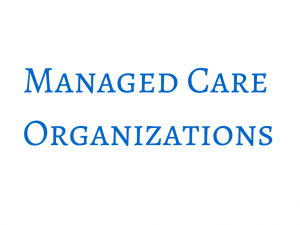OIG releases report showing limited primary care access for Medicaid patients
A November 2014 audit from the Office of the Inspector General (OIG) showed that as many states move from Medicaid to Managed Care Organizations (MCOs), access to a primary care physician involves some serious wait time. Because of these wait times, more and more Medicaid patients are filtering into healthcare systems through their emergency rooms, which impacts the continuum of care in a negative way.
Managed Care Organizations: The Numbers
The statistics on the situation paint a clear picture. 32 of the 50 states contract with 221 different Managed Care Organizations. During the OIG audit, 1800 primary care physicians from MCOs were contacted in an attempt to make a Medicaid appointment to study how many were accepting Medicaid and new Medicaid patients, and the average appointment scheduling wait time. Their findings showed that 51 percent of the surveyed providers could not offer appointments–which means inquiries for primary care to more than half of Medicaid patients is being met with a roadblock. Other numbers showed:
- 45% did not accept Medicaid
- 8% were not accepting new patients
- 35% could not be found at the location listed on the plan
What’s baffling is the volume of providers who had not updated their location information–meaning some Medicaid patients have to do extra digging just to find the primary care provider they need. Wait times were also surprisingly long. Most patients had to wait anywhere from two weeks to two months to get in and see a doctor. With such high wait times, it’s not surprising that the volume of ER cases is on the rise.
Government Plans
The opinions on how healthcare should solve this issue are, not surprisingly, different. While the Senate pushes for MCOs, the House is rooting for Accountable Care Organizations. So which is the right answer to Medicaid reform? It’s hard to say. Both systems have their advantages and disadvantages, but it seems that currently, Medicaid patients are struggling to find their place within the MCO system.
Community Impact
As more and more people with cold and flu-like systems make their way into crowded ER waiting rooms, the question of general population health and the spread of infection becomes a serious issue to weigh. Is there a balance to be struck between providers and those who use Medicaid cards? Possibly. For Managed Care Organizations, it appears that it begins with more providers accepting this form of healthcare so that wait times for a primary care physician can decrease, and thus, the ER can return to handling more emergency-type situations. Another possible solution: Some health systems have also adopted “Prompt Care” facilities that handle these types of cases on a first come first served basis.
We want your opinion on the issue: ACOs or MCOs? Which do you think will come out more successful?

